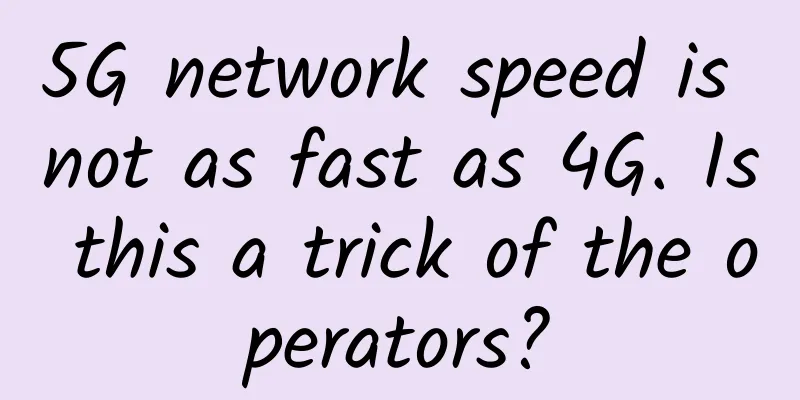Are you familiar with the all-optical networks that are being deployed one after another?

|
Recently, China Telecom Gansu Company held a press conference on the completion of Gansu's all-optical network. As of April 30, 2017, Gansu Province has built 14 all-optical cities and prefectures, 87 all-optical counties and districts, 1,234 all-optical towns, and 10,000 all-optical administrative villages. The broadband coverage rate of cities, counties, and townships in the province has reached more than 95%, and fiber-to-the-home has been fully realized; this year, Gansu Company's out-of-province bandwidth will reach 5,000G, and the province's basic network capabilities will achieve a revolutionary improvement and leap. This marks that Gansu Telecom's network has fully entered a new stage of development in optical networking and intelligence, which means that Gansu has bid farewell to the "old era of traditional copper cable program-controlled switching communications" and entered the world's leading "all-optical network era." "All-optical network" brings many benefits, and good experience promotes development In recent years, "all-optical network counties", "all-optical network cities" and "all-optical network provinces" have continued to emerge, and the construction of all-optical networks has become a highlight in the development of communications. The number of fiber-optic broadband users and broadband access rates have shown a clear growth trend.
The construction of all-optical networks has brought about a significant increase in Internet speed. Especially in remote rural areas, as long as an all-optical network is deployed, they can also enjoy the same optical network broadband and 4K ultra-high-definition TV as in big cities, and video chatting is no longer a problem. After the realization of "all-optical network", not only the Internet speed is guaranteed, but also the communication charges of ordinary people can be reduced a lot. For example, China Unicom's "Smart Wojia" service combines fiber broadband, 4G mobile phones, China Unicom TV and fixed-line phones and other products into a package with discounts. In the future, it will also drive the smart home, distance education, telemedicine, electronic information and other industries In addition, the construction of the all-optical network can also promote the development of the local area. At the same time, the optical network will effectively promote the application of emerging technologies such as cloud computing, big data, and the Internet of Things. Keeping up with national strategies, actively deploying all-optical networks As the status of optical communications in the implementation of "Broadband China" continues to improve, the commercial use of 4G and the rapid development of 5G networks have stimulated a sudden increase in access network data, bringing great changes to the entire society. At the same time, it has also stimulated people's demand for traffic data. All provinces and counties across the country have begun to actively deploy all-optical networks. Hainan Province: On May 16, the Communications Administration issued the Hainan Province Internet Development Report (2016) (hereinafter referred to as the Report). The Report shows that 18 cities and counties in Hainan (excluding Sansha City) and Yangpu Economic Development Zone have completed the all-optical network construction task in 2016, and Hainan has basically achieved the goal of building an all-optical network province. According to statistics, Hainan completed a total investment of 4.358 billion yuan in information infrastructure construction in 2016, added 3,188 new urban optical network communities, added 1,479 new optical network administrative villages, and achieved optical fiber conversion for 401,200 users. After a year of hard work last year, the coverage rate of optical fiber broadband network in urban communities in Hainan Province increased from 89.2% at the beginning of the year to 99.4%, and that in administrative villages increased from 71% at the beginning of the year to 94.2%; the coverage rate of urban 4G signals increased from 99.1% at the beginning of the year to 99.2%, and that in administrative villages increased from 84.7% at the beginning of the year to 99.4%, achieving Hainan's urban and rural optical fiber network coverage. The access rate of optical fiber broadband in urban areas reached 1,000 megabits per second, and that in rural areas reached 50 megabits per second. By 2020, the optical fiber coverage rate of cities, towns and administrative villages in the province will reach the national advanced level. At the same time, Hainan Province is also actively deploying the "Optical Network Smart Island" project. Chongqing: The Chongqing Communications Administration recently announced that Chongqing has built an "all-optical network city" in urban areas. It is reported that Chongqing completed the task of connecting 1,923 administrative villages with optical fiber by the end of July 2016, achieving the goal of connecting 100% of administrative villages with optical fiber ahead of schedule, and taking the lead in achieving optical fiber and 4G coverage in administrative villages in the west. In 2016, 4G network coverage was completed in nearly 4,000 administrative villages, achieving 4G signal coverage in all administrative villages in the city. Chongqing actively responded to national policies and implemented the national standard of fiber-to-the-home. At present, Chongqing has more than 16 million fiber-to-the-home ports, and the coverage rate of fiber-to-the-home in urban areas (the ratio of the total number of optical ports of basic telecommunications enterprises in urban areas to the total number of households) exceeds 185%, and the proportion of fiber-to-the-home ports in urban areas (the ratio between the total number of optical ports in urban areas and the total number of broadband ports) has reached 85.4%. Both indicators have reached the evaluation standards of the Ministry of Industry and Information Technology. Wutumeiren Township, Qinghai Province: Wutumeiren, 180 kilometers away from the city, lags behind seriously in information and communication. To promote development, in 2016, China Telecom Golmud Branch invested 2.393 million yuan to promote the construction of optical network in Wutumeiren. With the access of telecommunications broadband to agricultural villages in Wutumeiren Township, it marks the completion of optical network in all administrative villages in Golmud City, and the entry into the era of all-optical network. As of April this year, Wutumeiren Township has basically achieved full coverage of optical fiber network. China's optical network construction maintains a growth trend. According to data released by the Ministry of Industry and Information Technology, the number of fiber-optic access users reached 246 million. At the end of March, the total number of fixed broadband access users of the three basic telecommunications companies reached 310 million. Fiber-optic broadband is becoming more popular. The total number of fiber-optic access FTTH/O users reached 246 million, accounting for 79% of the total number of fixed broadband users, a net increase of 17.96 million households over the end of last year. At the end of March, the number of Internet broadband access ports reached 720 million, a year-on-year increase of 16.7%, and a net increase of 28.93 million over the end of last year. The trend of "optical in and copper out" of Internet broadband access ports is obvious. The number of fiber-optic access FTTH/O ports reached 570 million, a net increase of 44.26 million over the end of last year. From January to March, 1.888 million kilometers of new optical cable lines were built nationwide, and the total length of optical cable lines reached 32.3 million kilometers, a year-on-year increase of 23.9%, maintaining a relatively fast growth trend. The definition of “all-optical network” is “controversial” Wei Leping, executive deputy director of the Science and Technology Committee of the Ministry of Industry and Information Technology, once said that the all-optical network proposed by telecom operators is not a true all-optical network, and the arrival of the all-optical network era will take a long time. He believes that the all-optical network has a strict definition, that is, an end-to-end optical network in which all transmission, switching, and access are implemented in the optical domain, and control is allowed to be implemented in the electrical domain. When both transmission and access are fiberized, ROADM and OXC are also introduced in the switching layer, which constitutes an all-optical network in the strict sense. The transmission and access of the optical network city and the optical network province are realized in the optical domain, but the switching is still implemented in the electrical domain. Wei Leping believes that the evolution of my country's all-optical network has reached the final sprint stage. At present, my country's optical network is facing new opportunities to build optical network cities and provinces and realize a network power. my country has also become the world's largest optical communication market, with the world's most complete optical communication industry chain and the largest manufacturing base. He said that the all-optical network not only has no competitors in bandwidth and capacity, but also has irreplaceable advantages in network service performance and reliability. However, whether it is a true all-optical network or not, academic researchers still need to continue to explore and research; operators still need to actively plan; but for users, as long as it is beneficial, can promote bandwidth and capacity transmission, and has a good experience, it is the best. |
<<: How can operators innovate traffic management models?
>>: China Huaxin and Nokia jointly established "Shanghai Nokia Bell"
Recommend
Fortinet Named a Leader in Gartner® Magic Quadrant for Enterprise-Class Wired and Wireless LAN Infrastructure
Fortinet recently announced that it has been name...
CloudSilk launches German AS9929 line high-bandwidth VPS, 10% off annual payment starting from 216 yuan
CloudSilk has newly launched a VPS host connected...
How difficult it is to increase network speed and reduce fees
In response to the livelihood issue of "spee...
Justhost newly launched Singapore node, 20% discount, monthly payment starts from US$5.2
Strictly speaking, the Singapore node is not a ne...
F5 Lin Geng: "Code to User" Application Service Architecture Empowers Enterprise Digital Transformation
Recently, F5, the world's leading multi-cloud...
ProfitServer Singapore VPS 50% off, unlimited KVM monthly payment starting from $2.88
First of all, I wish all my readers a happy Natio...
Array explains the way of "power and change" and how the NFP platform allows enterprises to be flexible and not constrained by IT
[51CTO.com original article] The interview with Z...
Three ways edge computing expands IoT networks
With 6.4 billion devices connected to the interne...
BandwagonHost adds Netherlands (China Unicom line) VPS, 2.5-10Gbps bandwidth, quarterly payment starts from $46.7
BandwagonHost recently added VPS products for Chi...
Ten Tips to Simplify Fiber Optic Cable Installation
Installing fiber optic cable is a complex and tim...
Interviewer: Can you tell me about the release process of WeChat Mini Programs?
[[431428]] This article is reprinted from the WeC...
Super detailed! Introduction to Ethernet switch security features
Today I will talk to you about the security funct...
my country's mobile IoT connections account for 70% of the world's total, with "things" connections rapidly surpassing "people" connections
On January 30, it was learned from the Ministry o...
Maxthon Hosting 20% off: 56 yuan/month KVM-2GB/40G SSD/15M/Hong Kong CN2 (optional native IP)
Aoyo Host is a long-established hosting company e...
CMIVPS: 20% off for monthly payment of Hong Kong VPS host/30% off for annual payment, 10% off for dedicated server, 10% off for monthly payment of US VPS
In the blink of an eye, the summer vacation is ha...









